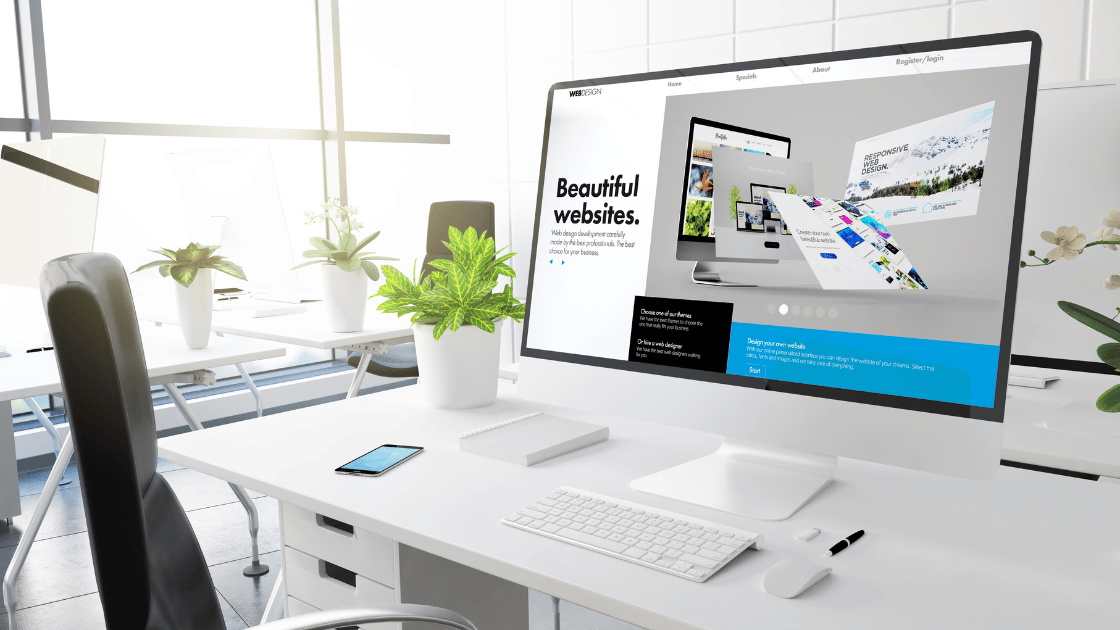Creating a website is an essential step for any entrepreneur who is serious about launching and growing their business. Whether you are a solopreneur or a startup, website design is critical for success — it helps potential customers find you, gives them valuable information about your brand, and can drive revenue. But website design can be complex and confusing if you don’t have the right information. To make website design easier, here are four essential things every entrepreneur should know about website design.
1. Start with a Plan: Before you begin website design, it’s important to develop a website plan. This should include what type of website you need (e.g., an e-commerce site or a blog), who your target audience is, and what website design elements are important for your website. This plan should also address website security and website hosting needs.
2. Content Comes First: Once you have a plan, it’s time to write the website content. This is an essential part of website design — without quality content, no one will find or engage with your website. When writing website content, make sure to use keywords that are relevant to your business and target audience, as this will help search engines find your website.
3. Good Design Matters: Website design should be considered an investment in your business. A website with good design will create a better user experience, which can lead to increased conversions and revenue. Investing in website design can also help you build trust with potential customers.
4. Monitor Performance: Once the website is up and running, it’s important to monitor website performance using website analytics tools. This will show you how visitors are interacting with your website, which pages they visit most often, and other valuable insights that can be used to optimize website design and website performance.
Here are some detailed tips on website design if you’re just starting out
Avoid Clutter
When it comes to website design, less is often more. Clutter can distract visitors and make your website difficult to use. To make website design easier, try to keep the website layout simple and streamlined. Use plenty of whitespace and avoid placing too many elements on one page. Choose a website style that reflects your brand and stick with it. This will help keep website design consistent throughout the website and prevent visitors from becoming overwhelmed or confused.
Prioritize Design Above the Fold
“Above the fold” website design is website design that appears when a website first loads — this is the content that visitors see before they scroll down. It’s important to prioritize website design above the fold since this is often the first impression potential customers have of your website. Make sure to include important website elements such as website navigation, website branding, and website calls-to-action above the fold. This will help visitors quickly understand what your website is about and start navigating your website with ease.
Keep Hick’s Law in Mind
Hick’s Law states that the more website design options available, the longer it takes for visitors to make a decision. This means that website designs with too many elements or website navigation options can be overwhelming for visitors and could lead to website abandonment. When designing your website, try to keep website navigation simple and streamlined — this will make website navigation easier and faster for visitors.
Encourage Scrolling, Not Clicking
When website design elements are placed above the fold, website visitors may not scroll down to see more website content. To encourage website visitors to explore website content below the fold, use website design elements such as arrows and site sections that draw attention to this content. Website animations can also be used to direct website visitors’ attention and keep them engaged with website content.
Keep Photos Authentic and Natural
When website design elements such as website images and website video are included, it’s important to keep them authentic. This means using website images that represent your business or website purpose in a real way. Avoid generic website stock photos — instead, use real website photos of people or products associated with your website. When creating website videos, try to keep them natural and unscripted — website videos that are too “produced” can come off as fake or too generic.
Type Should Be Legible First, Stylish Second
Legibility should be a website design priority — website type should be legible first, and stylish second. Make sure website fonts are large enough to read easily and that website type contrast is high. When selecting website fonts, use website fonts that represent your website’s purpose or branding. Try not to use too many different website font styles as this can be distracting. Instead, pick website fonts that will look good together and create a website type hierarchy to help website visitors differentiate between website headings, website body copy, and website calls-to-action.
Color Is Psychological
Color is an important website design element. The colors you choose can influence the website visitor’s experience and emotional response to your website. When selecting website colors, consider the psychology of color and how certain colors are associated with emotions or reactions. For example, red can be stimulating or aggressive while blue can be calming or reassuring. Consider the message of your website and the website’s purpose when selecting website colors — this will help ensure website visitors have a positive website experience.
Design for Mobile First
Today, website visitors use a variety of devices to access website content. This means website design should be optimized for mobile first — website elements such as website navigation and website calls-to-action should be easy to click or tap on a mobile device. Make sure website images are optimized for mobile loading speeds and website type is legible when viewed on a mobile device. Website design for mobile should be considered early on in website planning — this will ensure website visitors have an optimal website experience regardless of the device they’re using.
Design for Everyone
Website design should be accessible to website visitors of all abilities. Design website features that can be used by everyone — this might include website navigation elements such as website buttons or website forms that are easy to click or tap with a mouse, keyboard, or touchscreen device. Additionally, website type should be legible and website navigation should make sense for website visitors of all abilities. Design website features with website accessibility in mind — this will ensure website visitors can use and understand your website no matter what their ability level is.
Test Site Before Going Live
Last but not least, it’s essential to test your website design before going live. Testing website functionality across browsers and devices is critical for ensuring a good user experience and finding any bugs that need to be fixed. Website design testing should include website performance, website speed and website navigation — all of which can affect website visitor engagement and website conversions. Testing website design before going live is key for ensuring website visitors have a positive website experience.
Benefits of good website design
1. Increased website visitor engagement: A website that looks professional and is easy to navigate will keep website visitors engaged and on your website for longer periods of time.
2. Improved website conversions: An optimized website design can help website conversion rates by making it easier for website visitors to find what they’re looking for, understand the website’s message, and take action on website calls-to-action (CTAs).
3. Improved website accessibility: A website designed with website accessibility in mind can ensure website visitors of all abilities have an optimal website experience.
4. Increased website traffic: Website design optimization for search engine optimization (SEO) can help website pages rank higher in search engine results, resulting in increased website visibility and website traffic.
5. Improved website performance: Website design testing and monitoring website performance with website analytics can provide insights into website visitor behavior, which can be used to optimize website design and improve website performance.
Conclusion
Website design may seem intimidating, but with the right knowledge and guidance website design can be an effective asset for entrepreneurs of any level. Overall, good website design is essential for creating an engaging website experience that website visitors will remember. By optimizing website design for website visitors of all abilities, website conversions, website performance and website traffic, businesses can create a website that stands out from the crowd. With the right website design elements in place, entrepreneurs can maximize their website’s potential and reach new audiences.






